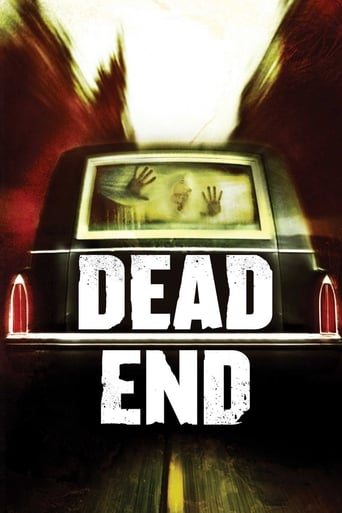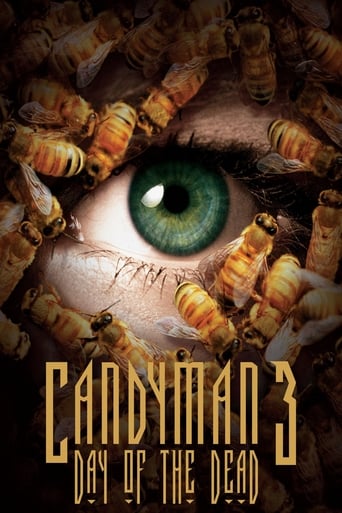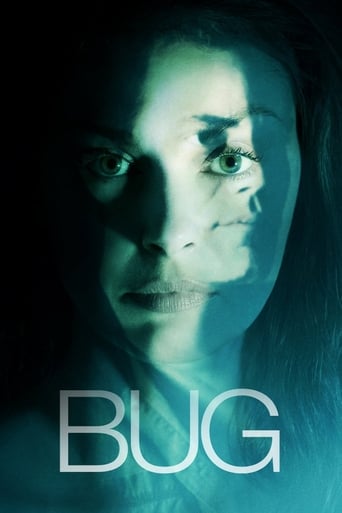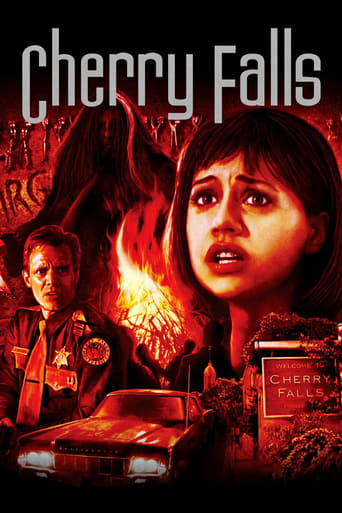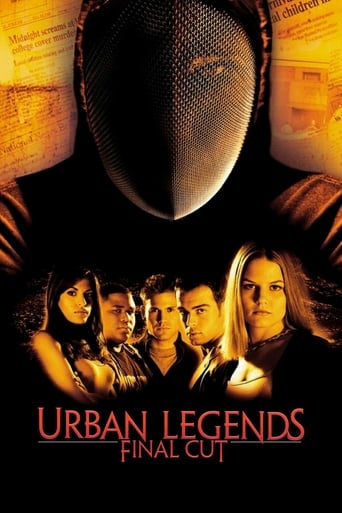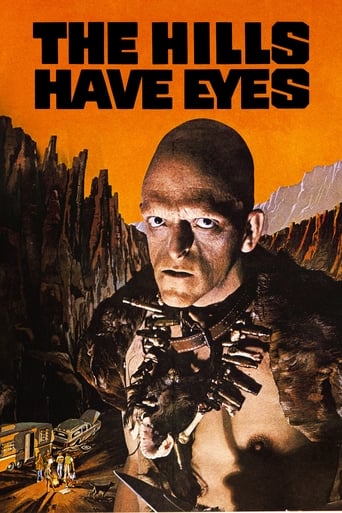
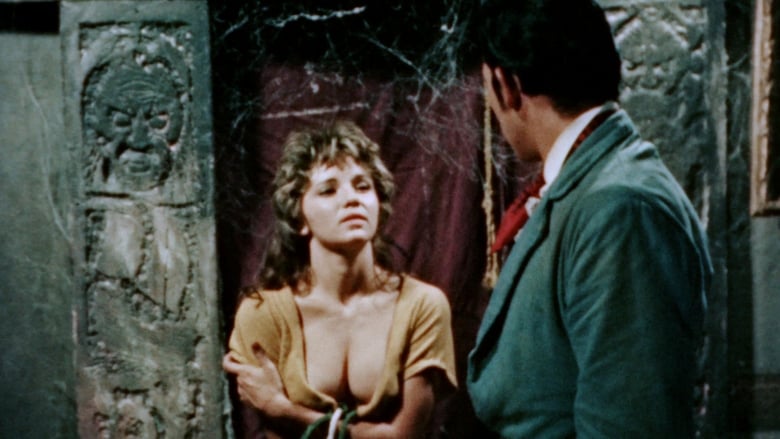
The Dungeon of Harrow (1964)
A man is shipwrecked on the island of a cruel Count and taken prisoner.
Watch Trailer
Cast


Similar titles
Reviews
Most folks might hate this one, but I found it to be about as fast paced as these mysterious castle on a mysterious island films can be. Our Mr Fallon is some upper crust guy stranded on an island with the skipper of the ship. After hearing a woman being mauled to death in the middle of the night, the duo set off for help, only to be attacked by a giant man with a slingshot. Turns out this guy works for the Count De Sade, a guy so crazy that his craziness make a physical appearance and starts throwing bats and spiders at the guy! With that truly surreal scene over with, De Sade and our man Fallon (what with the skipper nursing a bad head wound, which turns out to be the least of his problems) have dinner together where we're introduced to Cassandra, another of the count's employees. She's thankfully not so crazy as the count, who believes that pirates are invading his home! Throw in a mute slave girl, and the big slave fella, and top it all off with what the count keeps in his basement, and you've got a full crazy-fest of doom!Fair enough there. This might be a very cheaply made (check out the toy boat!), badly acted b-movie, but there's plenty going on and a few good creepy moments thrown in to boot. For an early sixties film, it does seem to be a bit violent too, what with the whippings and the rack and such like. For those with low expectations and a forgiving mindset towards low budgets, I think you'll find something to enjoy here. I suppose even those out for a laugh at rubber spiders and amateur dramatics might enjoy it too.
Made on a painfully obvious breadcrumb budget, with an overly talky script, limp (non)direction by Pat Boyette (who also co-wrote the long-winded screenplay), a lethargic, uneventful, and meandering narrative, hit-or-miss acting, a dissatisfying downbeat ending, and cheesy (far from) special effects (the cruddy matte painting of a crumbling castle and the rinky-dink miniature of a ship that gets caught in a storm are both laughably hokey), this dreary dud about a sadistic count (robustly played by William McNulty) tormenting several folks on a remote island for the most part proves to be a boring chore to endure, but nonetheless manages to evoke a potently brooding gloom-doom Gothic atmosphere and delivers a couple of genuinely creepy and unsettling moments (Eunice Grey's regrettably brief appearance as the count's hideously disfigured and deranged wife who's stricken with leprosy rates as the definite flesh-crawling highlight). Moreover, both Helen Morgan as the sweet and helpful Cassandra and Michele Buquor as traumatized mute Ann manage to transcend the movie's pervasive mind-numbing mediocrity. Alas, Russ Harvey makes for a bland and underwhelming hero as the drippy Aaron Fallon, the excruciatingly poky pacing sucks all the energy and entertainment value from the picture, the slushy orchestral score is more obtrusive than effective, and the whole thing degenerates into the inevitable "The Most Dangerous Game" rehash in the last third. A deadly dull wash-out.
"The mad Count De Sade lives in his families' (sic) castle located on a remote island. Count De Sade keeps his wife locked up in a dungeon below the castle and his insanity strike (sic) fear into the staff. After a terrible storm, a ship's captain and the son of the ship's owner find themselves washed ashore on this lonely isle, not knowing the danger they face from the evil Count De Sade," according to the DVD sleeve's synopsis.This hilariously awful spoof of "The Most Dangerous Game" could obviously be better, with a bigger budget and more directorial flourish. But the script, by Pat Boyette and Henry Garcia, is quite wittily written; and, the performances are delivered with appropriate tongues-in-cheek. Although its satirical intent serves to negate it as a "so-bad-it's-good" movie, "The Dungeon of Harrow" should appeal to followers of that genre.***** The Dungeon of Harrow (1962) Pat Boyette ~ Russ Harvey, Helen Hogan, William McNulty
My bad film guru (and the president of the Exposed Film Society) sprang this one on us last week. There was no denying the demented gleam in his eye as he pulled it out of its brown paper bag and announced what he had in store for us: "The Most Dangerous Game", filmed on a budget of about $2.95.Of course, $2.95 went a lot further back in 1962, but still...Anyway, there is certainly a lot to dislike about this film. It abounds with serious technical gaffes (my favorite was the 'repeating musket' that fired twice in two minutes without benefit of a reload). The hero is a wuss who stands by while his wounded friend fights the henchman and gets killed. More? OK -The plot is a shambles with no continuity to speak of. The movie wastes five minutes with a 'special guest star' who serves as the physical embodiment of the villain's madness and paranoia, but never shows him again. The hero is choked unconscious by the henchman but makes no mention of it when he wakes up and first meets his host. The mute servant girl is captured, put on the rack...and then the movie (and the hero, who put her in this predicament) just sort of "forgets" about her. More? Well, the sets are cheap, and the special effects are cheaper (the makeup is an exception to this). Much of the plot is carried by the narrator's droning, monotonic voice-over, which carries less dramatic impact than the menu recital at Denny's. Most of the dialog is simply ridiculous and stilted , as if it was translated from Japanese. ("I demand that our conversation be pleasant!!!") And the color values tended to shift violently from shot to shot, as if cheap film stock and problematic lighting equipment were the order of the day. (Note - this last may have been the fault of a bad print, rather than the camera crew). But there were a couple of nice moments here and there. The makeup effects were startlingly good in contrast to the rest of the film, the actors were LOOKED interesting, especially the mute servant girl and the Countess. And in spite of everything, there was a definite creepy atmosphere to be found, very nasty and disturbing.So what was the deal with this movie? I thought about it a bit, and realized that director/writer Pat Boyette basically tried to put a story from of the old "EC" horror comics on film. That would account for the stilted dialog, the sketchy character development (in a comic, physiognomy = character even more than in film), the loopy interior logic of the story ("EC" horror stories went out of their way to include a nasty "shock" ending and weren't big on psychological realism), the over reliance on the narrative voice (which belongs in captions over the panels), and the interesting makeup effects that mimicked the grisly pictures that the old EC artists did so well.In fact, I'd be willing to bet that when Boyette saw his leading man during casting, he instantly saw that the fellow was as close to being the equivalent of the lanky, shambling figures and caved in faces that artists like Johnny Craig and Jack Davis drew as an actual human could be and still exist in the real world.. He used costumes and lighting to emphasize the cartoony aspect of the visuals and turned everyone into living EC comics characters. (See: the leading lady's blank beauty, the Count's strong bony features, oddly bronze skin and sharp chin, the platinum 'do on the tall, bony black henchman, etc.) This would explain the movie's failings. Boyette knew how to 'frame' things, but he didn't know how to deal with three dimensions and moving bodies. Boyette knew how to tell a creepy story within the confines of a comics page, but the nuances of film and live actors escaped him. He wouldn't be the first person with this problem of course - look at what Joel Schumacher did to "Batman". But he didn't have a big budget to hide behind.In any case, I'm imagine that Boyette walked away from this train wreck and probably spent less time thinking about "Dungeon of Harrow"than the folks who post on this film's message boards. He did, within certainly vague boundaries, what he set out to do, and you have to respect him for it...even if you don't care for "Harrow".


